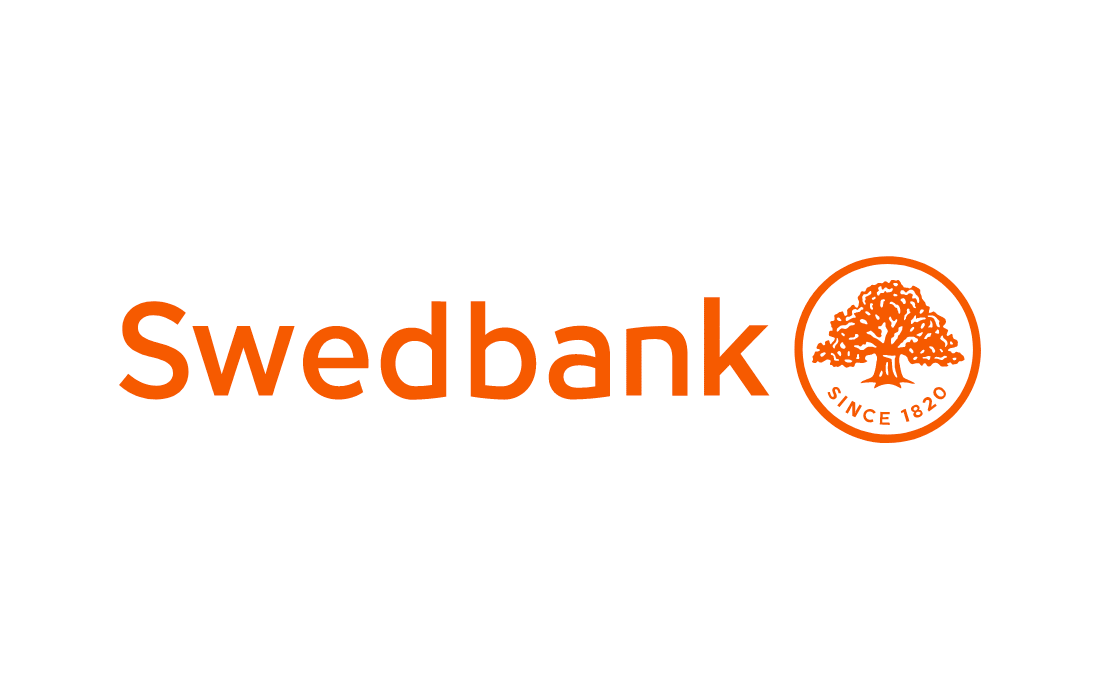Swedbank's Resilience: A Beacon of Hope in a Shifting Economy
January 29, 2025, 10:58 pm
Swedbank stands as a lighthouse in the stormy seas of the Swedish economy. Its recent year-end report for 2024 reveals a bank that has weathered the financial tempests with skill and strategy. The numbers tell a story of resilience, adaptability, and cautious optimism.
In 2024, Swedbank reported a return on equity of 17.1%. This figure is not just a number; it’s a testament to the bank’s robust performance amid challenging conditions. The cost/income ratio, a critical measure of efficiency, stood at 0.34. This indicates that Swedbank is not just growing; it is doing so while keeping a tight rein on expenses.
The bank’s income rose slightly, reaching 74.1 billion SEK, up from 73.1 billion SEK in 2023. This growth, though modest, signals stability. Net interest income dipped slightly, but net commission income surged by 11%. This shift reflects a strategic pivot towards fee-based services, a move that can cushion against fluctuations in interest rates.
Swedbank’s credit quality remains solid. The bank reported a credit impairment ratio of -0.01%, indicating that it is not only managing risk effectively but also benefiting from a favorable economic environment. The proposed dividend of 21.70 SEK per share, representing 70% of the profit, shows confidence in future earnings and a commitment to returning value to shareholders.
The economic backdrop is shifting. The Swedish economy, after a prolonged recession, is poised for recovery. Swedbank’s Economic Outlook predicts a resurgence in domestic demand, driven by lower interest rates and increased household consumption. The Riksbank is expected to cut the policy rate to 2% by March, marking the end of its rate-cutting cycle. This move is crucial. Lower rates will ease the financial burden on households, stimulating spending and investment.
Households are cautiously optimistic. They sense the winds of change but remain wary. The labour market, though still sluggish, shows signs of stabilization. Unemployment is projected to hover around 8.4% in 2025, but as the economy picks up, job growth is expected to follow.
The housing market is another bright spot. After a period of stagnation, home sales are rising, and prices are expected to increase by 5% this year. This rebound is fueled by lower mortgage rates and easing lending rules. A stronger housing market will further bolster consumer confidence and spending.
Swedbank’s leadership recognizes the importance of these trends. The bank’s new dividend policy, which aims to distribute 60-70% of annual profits, reflects a commitment to shareholder value while ensuring sufficient capital for growth. The upcoming Investor Day promises to shed light on future strategies, signaling that Swedbank is not resting on its laurels.
However, challenges remain. The geopolitical landscape is uncertain, and external factors could impact Sweden’s recovery. Inflation, while currently below the Riksbank’s target, is expected to rise. The bank must navigate these waters carefully, balancing growth with risk management.
In this context, Swedbank’s focus on cost control and efficient operations is vital. The bank’s total expenses rose by 5% year-on-year, but this increase is manageable given the overall income growth. Swedbank’s ability to adapt to changing market conditions will be crucial as it moves forward.
The road ahead is not without obstacles. The Swedish economy, while on the mend, faces headwinds. Global economic conditions, inflationary pressures, and potential shifts in consumer behavior could all influence growth. Yet, Swedbank’s strong foundation provides a solid platform for navigating these challenges.
As the second half of 2025 approaches, optimism is in the air. Domestic demand is expected to drive growth, with GDP projected to rise by 2% this year and 3% in 2026. Swedbank is well-positioned to capitalize on this recovery, leveraging its strong market presence and customer base.
In conclusion, Swedbank is more than just a bank; it is a pillar of strength in a fluctuating economy. Its recent performance underscores a commitment to excellence and a forward-looking approach. As Sweden emerges from the shadows of recession, Swedbank stands ready to support its customers and shareholders alike. The future may be uncertain, but with resilience and strategic foresight, Swedbank is poised to thrive.
In 2024, Swedbank reported a return on equity of 17.1%. This figure is not just a number; it’s a testament to the bank’s robust performance amid challenging conditions. The cost/income ratio, a critical measure of efficiency, stood at 0.34. This indicates that Swedbank is not just growing; it is doing so while keeping a tight rein on expenses.
The bank’s income rose slightly, reaching 74.1 billion SEK, up from 73.1 billion SEK in 2023. This growth, though modest, signals stability. Net interest income dipped slightly, but net commission income surged by 11%. This shift reflects a strategic pivot towards fee-based services, a move that can cushion against fluctuations in interest rates.
Swedbank’s credit quality remains solid. The bank reported a credit impairment ratio of -0.01%, indicating that it is not only managing risk effectively but also benefiting from a favorable economic environment. The proposed dividend of 21.70 SEK per share, representing 70% of the profit, shows confidence in future earnings and a commitment to returning value to shareholders.
The economic backdrop is shifting. The Swedish economy, after a prolonged recession, is poised for recovery. Swedbank’s Economic Outlook predicts a resurgence in domestic demand, driven by lower interest rates and increased household consumption. The Riksbank is expected to cut the policy rate to 2% by March, marking the end of its rate-cutting cycle. This move is crucial. Lower rates will ease the financial burden on households, stimulating spending and investment.
Households are cautiously optimistic. They sense the winds of change but remain wary. The labour market, though still sluggish, shows signs of stabilization. Unemployment is projected to hover around 8.4% in 2025, but as the economy picks up, job growth is expected to follow.
The housing market is another bright spot. After a period of stagnation, home sales are rising, and prices are expected to increase by 5% this year. This rebound is fueled by lower mortgage rates and easing lending rules. A stronger housing market will further bolster consumer confidence and spending.
Swedbank’s leadership recognizes the importance of these trends. The bank’s new dividend policy, which aims to distribute 60-70% of annual profits, reflects a commitment to shareholder value while ensuring sufficient capital for growth. The upcoming Investor Day promises to shed light on future strategies, signaling that Swedbank is not resting on its laurels.
However, challenges remain. The geopolitical landscape is uncertain, and external factors could impact Sweden’s recovery. Inflation, while currently below the Riksbank’s target, is expected to rise. The bank must navigate these waters carefully, balancing growth with risk management.
In this context, Swedbank’s focus on cost control and efficient operations is vital. The bank’s total expenses rose by 5% year-on-year, but this increase is manageable given the overall income growth. Swedbank’s ability to adapt to changing market conditions will be crucial as it moves forward.
The road ahead is not without obstacles. The Swedish economy, while on the mend, faces headwinds. Global economic conditions, inflationary pressures, and potential shifts in consumer behavior could all influence growth. Yet, Swedbank’s strong foundation provides a solid platform for navigating these challenges.
As the second half of 2025 approaches, optimism is in the air. Domestic demand is expected to drive growth, with GDP projected to rise by 2% this year and 3% in 2026. Swedbank is well-positioned to capitalize on this recovery, leveraging its strong market presence and customer base.
In conclusion, Swedbank is more than just a bank; it is a pillar of strength in a fluctuating economy. Its recent performance underscores a commitment to excellence and a forward-looking approach. As Sweden emerges from the shadows of recession, Swedbank stands ready to support its customers and shareholders alike. The future may be uncertain, but with resilience and strategic foresight, Swedbank is poised to thrive.

